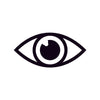KNOWING MORE ABOUT EYE STRAIN AND ASTHENOPIA
Eye strain or asthenopia is one of the most common complaints the optometrist hears while consulting in everyday practice. Patients come in with non-specific symptoms saying:
'My eyes feel tired.....'
'I feel eyestrain after.....'
'I get headaches after....'
'I feel tired after.....'
So what exactly is asthenopia? This is when the patient experiences a vast range symptoms such as ocular fatigue and discomfort, pain in or around the eyes, headaches and occasionally blurred and double vision simply from using the eyes. Usually this is precipitated by copious amounts of prolonged computer or close work.
Asthenopia can be classified as internal or external; internal asthenopia is when the person feels strains and aches inside the eye, and external asthenopia consists of dryness and irritation felt on the front of the surface of the eye. Internal asthenopia can be caused by uncorrected refractive errors, vergence anomalies, heterophorias as well as accommodative dysfunctions. External asthenopia are mainly related to the conditions in the viewing environment such as lighting, poor image quality, flickering stimuli and dry eye.
With the vast amounts of social media, information technology and smart phone use, it's not surprising how much the frequency of asthenopia increases in everyday practice. As optometrists we identify the issues that are causing the patients asthenopic symptoms and form treatment plans subsequently.


